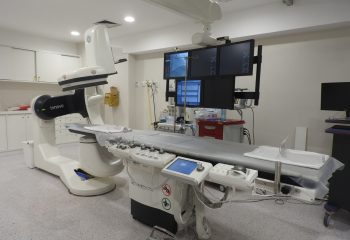Mother recovers significant compensation for instrumental vaginal delivery injuries
Yevgeni Shkuratov and Clare Decena of Longton Compensation Lawyers recover compensation for a young mother in only 10 months from the time of commencement of court proceedings for injuries she sustained because of an instrumental vaginal delivery in a New South Wales Hospital.
A small proportion of women who give birth vaginally will suffer 3rd or 4th degree tears. The risk of such tearing is increased with instrumental vaginal deliveries by either vacuum (ventouse) or forceps, including rotational forceps.
Nevertheless, not all women with such tears will experience permanent symptoms. An extensive examination should facilitate an accurate diagnosis of damage to the perineum and anus. If followed by a competent and appropriate repair, women have a chance to recover from their injuries. The presence of permanent symptoms is often linked to inadequate care provided by medical professionals who lack knowledge, training, experience, or diligence. As a result, if a woman suffers permanent and disabling symptoms due to substandard medical care, it could potentially warrant a claim for medical negligence compensation.
Informed consent in obstetrics
Adults with capacity have the right to make decisions regarding their own bodies. This includes the right to give consent for medical treatment, refuse consent for any reason, or revoke consent, even if refusing or revoking treatment may result in severe harm or death. Generally, no surgery, procedure, or treatment can be performed without prior consent from the patient or, if the patient is incapable of providing consent, from their legally designated decision maker.
The need to obtain informed consent for a procedure by explaining the risks and benefits of the proposed procedure, as well as alternatives to the procedure, is a basic skill expected of all medical practitioners.
In an obstetric context, to obtain the patient’s informed consent to any procedure which the medical practitioner proposes to perform on the patient, such as an instrumental delivery by way of vacuum or forceps, the medical practitioner has to be careful to ensure that that he or she explains to the patient that she has the alternative options of a trial of instrumental delivery in theatre, or delivery by caesarean section (c-section), together with a full explanation of risks and consequences of the proposed procedure and its alternatives.
What is maternal birth injury?
A maternal birth injury can also be referred to as a perineal tear, a birth tear, a 3rd or 4th degree tear, or an obstetric anal sphincter injury (OASI). A maternal birth injury can also occur due to injury to the pudendal nerve, which often results in denervation or pudendal neuralgia or neuropathy, and consequent loss of function.
A maternal birth injury occurs during vaginal childbirth. The risk of such injury is increased with use of birthing instruments such as vacuum or ventouse or forceps (including rotational forceps).
There are 4 different types of perineal injury that occur during vaginal childbirth. The most severe of these are 3rd and 4th degree tears of the skin and muscle which starts at the vagina and continues across the perineum and cuts into the anal sphincters. These muscles control bowel function.
A tear classified as:
- 3a tear causes damage to less than 50% of the external anal sphincter.
- 3b tear causes damage to more than 50% of the external anal sphincter.
- 3c tear causes damage to both the external and internal anal sphincter.
- 4th degree tear not only damages the external and internal anal sphincter but also affects the lining of the anal canal.
Sometimes, a buttonhole tear can result, which is a tear that occurs in the anal or rectal lining, as well as the vaginal wall, without damaging the anal sphincter. If missed it, can result in a rectovaginal fistula (i.e. a pathway between vagina and rectum).can result, which is a tear that occurs in the anal or rectal lining, as well as the vaginal wall, without damaging the anal sphincter. If missed it, can result in a rectovaginal fistula (i.e. a pathway between vagina and rectum).
After giving birth vaginally with or without instruments, it is important to promptly diagnose any tearing. To ensure comprehensive evaluation of any damage, all women should undergo a thorough examination of the perineum following delivery. This examination should include checking the vagina and conducting a digital rectal examination, where a medical professional inserts a gloved finger into the anus to identify any potential injuries. Any damage found should be accurately classified, and appropriate arrangements for repair should be made. In the case of a 3rdor 4th degree tear, it is crucial to involve an experienced surgeon and perform the repair in an operating theatre using suitable materials and techniques. It is not advisable to have these tears repaired by a midwife in the maternity ward. A further rectal examination should be performed after the repair.
What are the consequences?
A negative experience before, during or shortly after childbirth is highly personal and everyone reacts differently. However, the most common consequences of an instrumental vaginal birth by vacuum (ventouse) or forceps and undiagnosed or improperly treated perineal tears can include some of the following:
- Urinary incontinence – lack of control to pass urine.
- Faecal incontinence – lack of control to pass faeces (i.e. stool) or wind.
- Development of a rectovaginal fistula – which is a hole or a passage in the wall between vagina and anus, which can cause faeces to pass through the vagina.
- Pain in the perineum, being the tissue between the vagina and anus when sitting or being active, or on sexual intercourse or when urinating or passing stool.
- Scarring in the perineal area.
- Nerve damage.
- Further surgical procedures to correct tearing or scarring.
- Feeling of heaviness in the vagina or perineal area.
- Development of post-natal post-traumatic stress disorder or depression.
- Difficulty bonding with your baby.
- Feeling isolated or a sense of guilt or failure.
- Avoiding circumstances or situations that are reminiscent of the birth.
- Blood clots in legs or pelvis veins.
- Injuries to the bladder.
- Uterine ruptures.
- Pelvic organ prolapse due to weakened pelvic muscles or ligaments resulting in dropped organs.
How can Longton Compensation Lawyers help you?
If you or a family member has experienced negative outcomes due to inadequate medical care, it is important to consult with a medical negligence solicitor to address your situation. Unfortunately, the quality of maternity care in Australia may occasionally fall below acceptable standards. If you have suffered injury or harm because of negligent medical care, you may have the right to pursue legal action against the medical professional or hospital responsible. While a medical negligence claim cannot undo the damage caused, it can provide an opportunity for justice and compensation. Such compensation can help alleviate the physical, emotional, and financial burden endured by you and your family due to the negligence.
If you would like to make a claim for compensation because of an instrumental delivery by way of vacuum (ventouse) or forceps or as a result of a perineal tear you sustained during your birth, please reach out to Longton Compensation Lawyers.
We are here to assist you and offer a complimentary initial consultation, allowing you to directly speak with a legal professional. Following this conversation, we will inform you of your eligibility for compensation. Our expertise lies in medical negligence cases, particularly those involving severe birth tears, vacuum and forceps deliveries, and all kinds of birth trauma. Our dedicated solicitors are fully committed to advocating for victims of negligent medical treatment, tirelessly fighting for the justice they deserve.
*Disclaimer: This is intended as general information only and not to be construed as legal advice. The above information is subject to changes over time. You should always seek professional advice before taking any course of action.*







